Believe In Your Leghorn Chicken Skills But Never Stop Improving
The Leghorn Chicken, I think this chicken above all other chickens is the one that we know best.
That dandy white chicken has a big red wattle and fairly long legs.
And the go-to chicken when it comes to cartoons on TV and laying hens.
I have owned one or two in my time and think they’re just great!
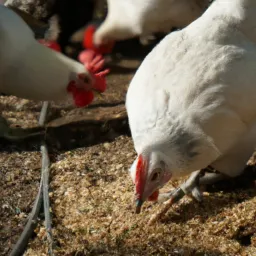
A Brief History Of The Leghorn Chicken
The Leghorn chicken is named after the place they originally came from.
Livorno (Italian for Leghorn) is a port city in the Tuscany region of Northern Italy, though surely has its leghorn chicken all around the world though…
Captain Gates brought the Leghorn breed to the United States in the mid-1800s.
Their egg-laying abilities and rather small appetite for their size made them the best-kept egg chicken of Americans.
I guess you could say the word was out about leghorn chickens and their fame went from country to country.
Yes!
The word got out!
So What Does This Chicken Look Like?
What does the leghorn chicken look like, well…
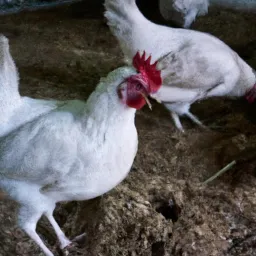
This Mediterranean leghorn chicken breed has a small body, with those striking large red wattles, and white earlobes, plus the yellow legs, can not forget the yellow legs – can’t miss them…
The Leghorn breed can have either a single or rose comb.
I bet you never knew that as the single rose comb seems to be the most common or popular.
And… Get this!
Also comes in standard and bantam sizes.
Leghorns actually are not big birds.
These chickens only weigh from about 4.5 – 6 pounds when they are fully grown.
Bantam and Large Fowl (single and rose comb:
- Black
- Silver
- Dark Brown
- Light Brown
- Buff
- White
While the Bantam (single comb only:
- Barred
- Red
- Columbian
- Golden
- Black-Tailed
Although the brown leghorns were actually the first variety that was introduced to the United States, it is the White Leghorn Chickens that seem to have taken off and is the most popular.
How Many Years Does The Leghorn Lay Eggs For?
The Leghorn hen seems to be a firm favourite when it comes to industrial poultry concerns.
This hen will lay anywhere from 280-320 eggs per year!
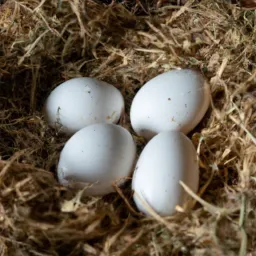
This equates to about 4+ eggs per week; which is something…
They are said to lay well into their third or fourth year too.
This is mighty for this breed of chicken, but unfortunately, it has also worked against them, these leghorn chickens are the main chickens that end up like battery hens.
This is still going on today, to me, this practice should have finished years ago and I never buy cage eggs at the supermarket, if they do not have free-range eggs I won’t buy them.
And I get mad when I see people go up as though they don’t even think about it and pick up the cage eggs on the shelves.
I try to flaunt that I am buying free-range eggs,
Are Leghorn Chickens Friendly?
I have found that they are generally friendly chickens, though they have a tendency to be a bit noisy and aggressive at times.
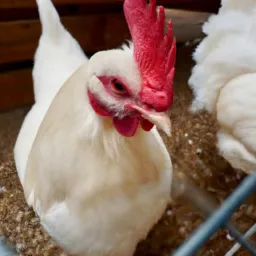
See also Can Chickens Eat Spinach - What Do You Think?
I have only ever had a leghorn hen, and have found that they are a friendly bird, a bit flighty but nothing to worry about.
Leghorn hens lay white eggs, laying an average of 280 per year and sometimes reaching 300–320.
Now, that’s a lot of eggs.
They are said to be a better egg layer than brooder. I can’t say that any of my leghorns ever went broody on me.
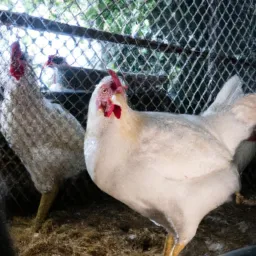
And if you do not want to breed them this is a really good thing, as broody hens can be a real challenge, and not are they only cranky, but fill up the laying boxes for weeks.
I have found a nest box occupied by a broody hen plus another hen that has barged her way into the nest box as well to lay her egg.
So it gets a bit crowded…
How Long Do Leghorn Chickens Live For?
You might be surprised to learn that leghorn chickens can live around 4-6 years.
If you look after them, then you might even get more years out of them.
Because Leghorn hens are so productive when it comes to egg-laying, their life expectancy is less than the standard of a bird.
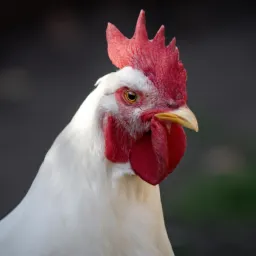
This is because they lay so many eggs than other breeds of chickens it wears them out in a way…
How Much Does A Leghorn Chicken Cost?
As you can see when buying one or two chickens is more expensive, and as with anything, you could say buying in bulk it gets less.
Are Leghorn Chickens Noisy?
They can be quite noisy when they have laid an egg, but other than that, they are a pretty good chicken.
But if you get a rooster, well then…

He can be quite noisy, the crow being louder because of his size.
So early morning crowing is not out, but if you don’t mind…
That’s fine
But when it comes to having chickens in your backyard in the suburbs.
I am afraid roosters as backyard chickens will most probably be a no-no with the council because of sound pollution.
And as there is a thing about noise at a certain time of the morning – the rooster does not conform to this and crows at about 5 in the morning.
Now you don’t want your neighbours complaining about the crowing rooster next door – or in fact, in the next block do you?
So there you go…
The leghorn chicken is the best for egg laying if you decide that you only want a few hens for eggs.
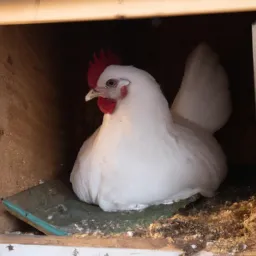
Just bear in mind that they will need a tall fence as they are more flighty birds, and could fly over the top of a small fence.
Why Leghorn Chickens Were So Popular as Laying Hens and What Changed!
Leghorns have dominated the egg industry for decades.
However, in recent years, there has been a decline in their popularity.
Why Leghorn chickens were once so popular as laying hens and what factors have contributed to their changing status?
A Legacy of High Egg Production
Leghorn chickens originated in Italy and were first introduced to the United States in the early 1800s.
They quickly gained a reputation for their remarkable egg-laying capabilities.
Leghorns are known for their ability to lay a large number of white-shelled eggs, often outperforming other breeds in terms of sheer quantity.
This made them ideal for commercial egg production, where efficiency and productivity are key.
The Ideal Backyard Chicken
Not only are Leghorns prolific layers, but they are also relatively low-maintenance birds.
They are known for their hardiness, adaptability, and ability to forage for their own food.
Leghorns are generally healthy and can thrive in a variety of climates, making them a popular choice for backyard chicken keepers worldwide.
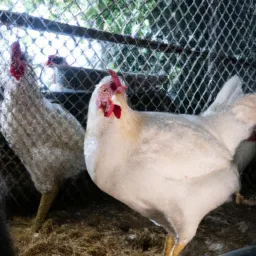
Size Matters
Another reason for the popularity of Leghorn chickens is their relatively small size.
Compared to other breeds, Leghorns are lightweight birds, which means they require less feed and space to thrive.
This made them an attractive option for both commercial and small-scale egg producers, as they could maximize their egg production while minimizing costs.
The Changing Tides
Despite their many advantages, Leghorn chickens have experienced a decline in popularity in recent years.
Several factors have contributed to this shift.
One of the main reasons is the rise of alternative breeds that offer a combination of high egg production and other desirable traits.
Breeds such as the:
– Rhode Island Red
– Sussex
– Australorp
Have gained popularity for their exceptional egg-laying abilities coupled with a more docile temperament or attractive appearance.
Shift in Consumer Preferences
Consumer preferences have also played a role in the decline of Leghorn chickens.
With the growing interest in backyard poultry, many people are now looking for dual-purpose breeds that not only provide a steady supply of eggs but also serve as good meat birds.
Leghorns, with their smaller size and leaner bodies, are not as well-suited for meat production as some other breeds, which has led to a shift in demand.
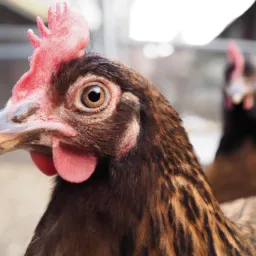
While Leghorn chickens were once the go-to breed for commercial and backyard egg production, their popularity has waned in recent years.
The rise of alternative breeds, changing consumer preferences, and the need for dual-purpose birds have all contributed to this shift.
However, it is important to note that Leghorns still have their place in the poultry world. Their exceptional laying abilities and hardiness make them a valuable choice for those primarily focused on egg production.
As with any breed, it’s essential to consider your specific needs and goals when selecting your flock.
Remember, raising chickens is a personal choice, and there are many factors to consider when choosing the right breed for your flock.
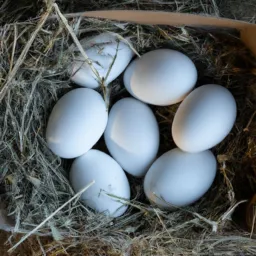
Whether you go with Leghorns or opt for another breed, the joy of having fresh eggs from your own backyard will undoubtedly be a rewarding experience.
